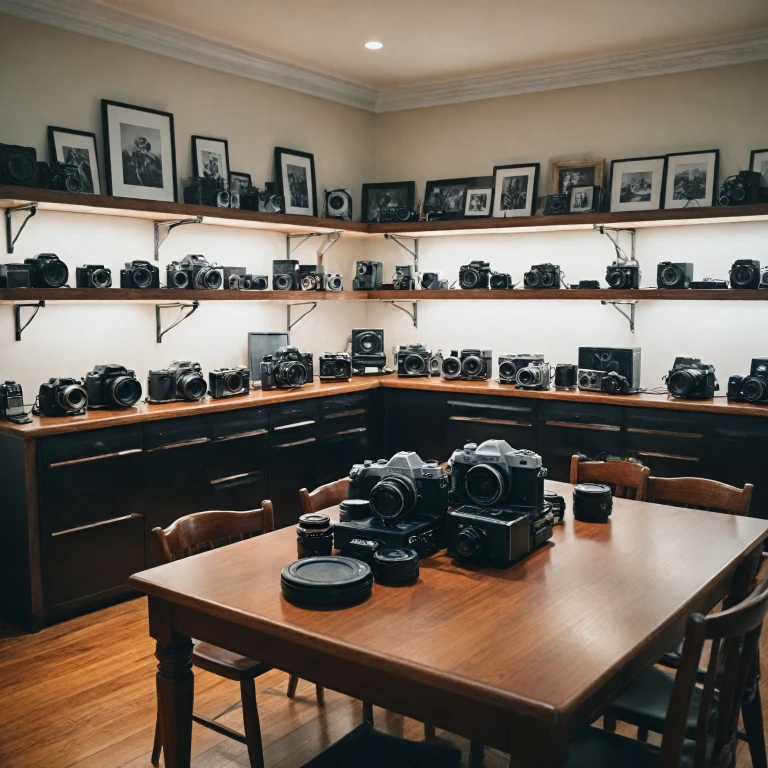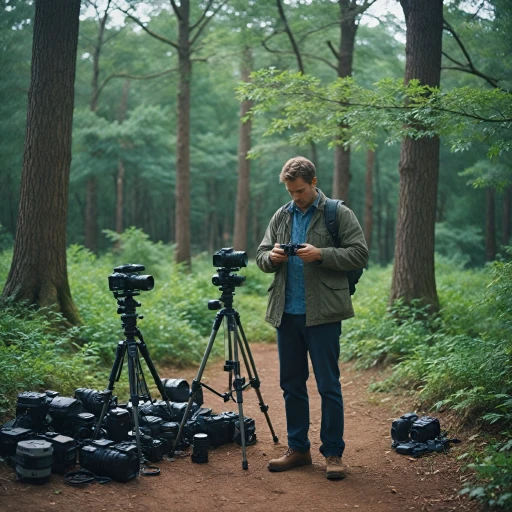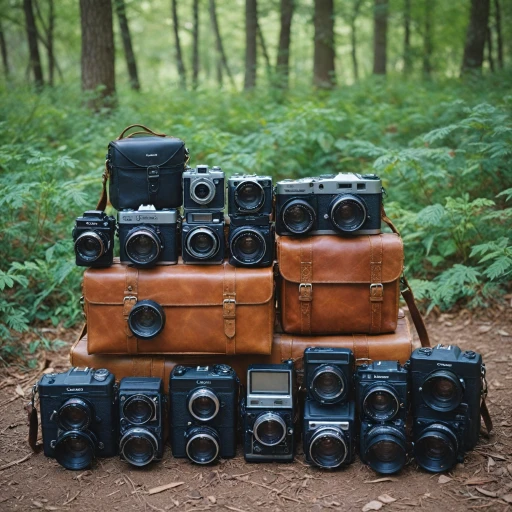Understanding the High Price Tag
Exploring the Steep Cost of Premium Cameras
Embarking on a journey to understand why some cameras carry such a high price tag is fascinating. These luxurious devices, such as the canon eos and leica series, are not just tools; they are meticulously crafted technological marvels designed for serious photographers. Investing in a full-frame or medium format camera can seem daunting at first, but a closer look reveals the rationale. High-end cameras often boast specialized features, such as the most advanced cmos sensor technology available, enabling them to produce superior image quality compared to entry-level models. These sensors are crucial in delivering exceptional dynamic range and clarity. Moreover, these cameras usually come with the option of interchangeable lenses, allowing professionals to switch between zoom lenses or prime lenses suited for their unique photography style. Lens quality and versatility can significantly impact the final result of a photograph, making them integral to the overall investment. Adding to the allure are the precision optics and robust construction materials. Many cameras, like the fujifilm gfx from the top range, are built to handle challenging environments, ensuring longevity and resilience, which in turn justify their price. While the price may be sold at a premium, it's essential to recognize that these offerings are meticulously tailored for those who demand the best. For more insight on what complements these expensive cameras and enhances their utility, such as specialized bags, check out this essential photography gear guide.Technological Marvels: Features of High-End Cameras
Technological Excellence in Camera Design
High-end cameras stand as technological marvels, embodying a convergence of advanced design and state-of-the-art innovations. These elite pieces of equipment, crafted by renowned brands such as Canon, Leica, and Sony, redefine what is achievable in photography with their impressive array of features.- Unmatched Image Quality: At the core of these cameras are cutting-edge CMOS sensors, often seen in full frame and medium format configurations, offering exceptional image quality and dynamic range. These sensors, when coupled with high-caliber lenses, capture the finest details with precision.
- Versatility in Lenses: The ability to swap out lenses is crucial for professionals aiming for versatility. With ranges that include interchangeable and zoom lenses, cameras like the Canon EOS series and the Leica series ensure photographers have the tools to capture a wide variety of scenes, from grand landscapes to intimate portraits.
- Mirrorless Advancements: Mirrorless cameras, particularly from the Sony Alpha series, have gained fame for their compact design without compromising on performance. These models offer rapid autofocus and burst speeds, which are essential for capturing fleeting moments.
- Built for Performance: High-end cameras are engineered to withstand various shooting environments. With robust builds and weather sealing, models like the Fujifilm GFX series ensure reliability during shoots in challenging conditions.
Who Buys These Cameras?
Exclusive Circle: Who Opts for These Premium Devices?
Understanding who invests in pricey top-tier cameras can be intriguing. Expensive cameras are often seen in the hands of professionals who demand perfection in every shot. The allure of full frame cameras—known for their superior image quality—remains a strong motivating factor. Likewise, photographers who specialize in capturing dynamic scenes appreciate the comprehensive range of zoom lenses available in these premium models. Many photography enthusiasts and professional photographers gravitate toward the luxurious Leica series and the advanced features of Canon EOS models. Such brands are revered for their precision-engineered lenses and high-functioning cmos sensors. In addition to their dynamic range capabilities, these cameras offer unparalleled image quality that attracts seasoned users.- Fine Art Photographers: Engaged in producing detailed art, they often opt for medium format cameras from Fujifilm GFX series. These devices deliver exceptional detail that enhances their creative expression.
- Wildlife Photographers: For this group, reliable zoom lenses are crucial. Thus, the Sony Alpha series’ mirrorless cameras with interchangeable lens options are immensely popular.
- Celebrities and Collectors: It's not just about capturing moments for some; owning one of the most expensive cameras becomes a status symbol. Such cameras are often purchased not only for their functional prowess but as collectibles, adored for their craftsmanship.
Comparing Top Models
Juxtaposition of Elite Photography Tools
When delving into the realm of high-end cameras, the landscape can be both intriguing and overwhelming. These luxury devices are crafted to offer not just unparalleled image quality but also evolve as technological marvels in the world of photography. The intricacies that set these cameras apart lie in their specs, which often include advanced full frame CMOS sensors, interchangeable lenses options, and superior dynamic range capabilities. At the pinnacle of this elite group, we see brands like Leica and Canon. Their series, like the Leica series and Canon EOS, represent the most expensive offerings. Comparing these models, the price often reflects features like medium format systems and advanced zoom lenses, pushing the boundaries of what image quality professionals can achieve. In this world of expensive cameras, it becomes crucial to decipher the merits of each model. Here are some of the notable features among these top contenders:- Leica Series: Known for craftsmanship, these cameras often feature premium lenses that cater to photography enthusiasts who desire the best. Their design is classic yet packed with cutting-edge technology, often making them a choice for those who appreciate luxury.
- Canon EOS Series: With models like the Canon EOS R5, they offer mirrorless designs and full frame sensors known for exceptional autofocus and dynamic range, making them ideal for various genres of photography.
- Sony Alpha Series: This is a cornerstone in mirrorless technology, boasting models with unparalleled sensor capabilities and ISO range. The Sony Alpha range is famous for seamlessly blending functionality with stellar image output.
- Fujifilm GFX Series:, medium format cameras are at the forefront of delivering high resolution and wide dynamic range, setting them as a choice for professional photographers focused on large-scale prints and commercial projects.
Challenges in Owning High-End Cameras
Ownership Hurdles in the Luxury Camera Market
Owning one of the world’s most expensive cameras is an undeniable privilege, yet it is not without its challenges. These high-end devices, whether it's a medium format behemoth or a sleek mirrorless wonder, come with their own set of hurdles that every owner must be prepared to navigate.- High Prices for Maintenance and Accessories: Beyond the initial hefty price tag of these cameras, owners must be ready to shell out for ongoing maintenance and accessories. For instance, a Canon EOS model may require compatible, often costly, zoom lenses or specialized interchangeable lens systems to unlock its full potential. Prices for these additional components can be significant.
- Complexity in Handling: The advanced features crammed into these expensive cameras demand a steep learning curve. The sophisticated sensor and dynamic range capabilities, such as those found in the Sony Alpha series, mean that amateurs can struggle to achieve the top-notch image quality these devices promise. Some lenses require meticulous handling and precision, akin to crafting a masterpiece.
- Limited Portability: High-end formats like the medium format cameras, including the Leica Series, can be cumbersome and less suited for spontaneous photography. They may require dedicated equipment bags and are not as travel-friendly as some might expect, despite their range of capabilities.
- Finding Suitable Subjects: To justify the investment, photographers need subjects worthy of such advanced equipment. While the Leica series might captivate the taste of photography stars, capturing their brilliance demands a unique eye and exceptional talent.
- Lack of Immediate Gratification: Unlike some technology sectors, where instant results are commonplace, photography with these advanced tools is often a patient pursuit. The payoff of superior image courtesy and incomparable full frame options like the Fujifilm GFX requires dedication and understanding.
The Future of Luxury Cameras
Luxury Camera Landscape
The future of luxury cameras is intricately tied to both technological advancements and evolving photography demands. The camera market is continually pushing boundaries, with iconic brands like Canon, Sony, and Leica leading the charge in innovation. As we delve into what lies ahead, a few key trends are worth noting.
- Higher Resolution and Dynamic Range: As photo enthusiasts and professionals crave even more impressive image quality, the push for higher resolution sensors and enhanced dynamic range is palpable. Cameras like the Sony Alpha series are often equipped with cutting-edge CMOS sensors that exceed expectations in capturing detail and depth.
- Enhanced Mirrorless Technology: The trend towards mirrorless cameras is expected to continue, with advancements ensuring these systems compete directly with full-frame DSLRs. The Canon EOS mirrorless series exemplifies this, offering exceptional image quality with professional standards in a lighter, more compact frame.
- Customizable Interchangeable Lenses: Although lens innovation has reached considerable heights, the future holds potential for even more specialized and customizable options. Lenses with improved zoom capabilities, wider apertures, and superior build quality will delight future buyers.
- Integration of AI and Machine Learning: As these technologies pervade many aspects of life, their integration into high-end cameras might redefine user experience. Cameras of the future may leverage AI to aid in composition, setting adjustments, and real-time style adaptations.
- Sustainable Practices and Materials: Reflecting broader societal shifts, camera manufacturers might prioritize eco-friendly materials and sustainable practices in production, reducing the environmental footprint of their most expensive cameras.
The craving for ultimate control over image outcomes and the pursuit of perfect imagery suggest that developments in expensive cameras will continue to allure photography stars and aficionados alike. It's important for potential buyers to consider that the charm of these luxury goods lies not just in their technical prowess, but in fostering an enriched photographic experience.



